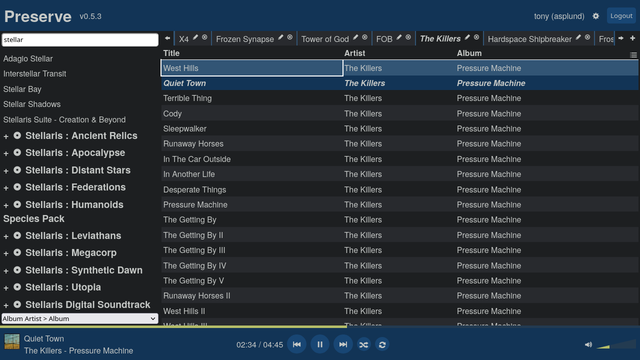Preserve is a web based media player frontend to a jellyfin server. It aims to replicate the experience of using players like foobar2000 or Clementine with its two panel design allowing you to quickly search tracks and assemble/order a playlist how you like, including full keyboard controls. It's fully open source, under GPLv2+.
Since it is a jellyfin client, you will first need to host your music using a Jellyfin server, but once that is done you can use Preserve in your browser at preserveplayer.com or install a desktop client from the Preserve Gitlab releases.

Tech
Preserve is built using Vue.js 3 and Typescript. It was migrated from Vue 2 to Vue 3 during development as the then-beta Vue 3.0 led to a significant performance improvement. It uses web APIs for actual media playback, including on desktop where the client is an Electron client.
For testing, Cypress is used. To allow testing the application in the absence of a jellyfin server, axios is used for HTTP requests. This allows the use of axios-mock-adapter for mocking out HTTP responses allowing the application to run against a test data source for functional testing.
In addition, the jellyfin project provides an autogenerated axios client from the swagger definitions with full typescript support, which made things much nicer to work with.